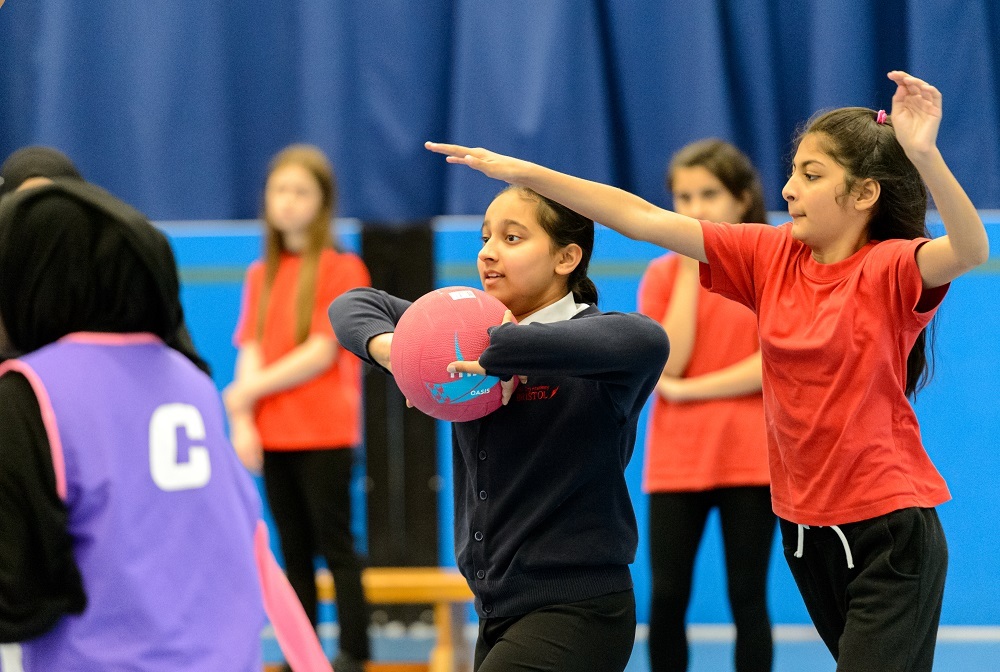Support the Be Safe - Have Fun Campaign
Get involved with our children and young people safeguarding campaign

Children and young people’s activity levels have been maintained and remained stable across the 2023-24 academic year.
Sport England's Active Lives Children and Young People Survey Report published today shows that 47.8% of children are meeting the Chief Medical Officers’ guidelines of taking part in an average of 60 minutes or more of sport and physical activity every day.
Today’s report demonstrates the long-term impact of the coronavirus (Covid-19) pandemic on children and young people’s relationship with sport and physical activity.
Children who were in nursery to school Year 4 (ages 4-9) when the pandemic struck in 2020 have been particularly disadvantaged. This age group, in school Years 3-8 (ages 7-13) during this report’s timeframe, remain less likely to have positive attitudes towards activity and have a lower sense of opportunity.
Children in school Years 3-6 have seen the largest drops in those reporting three or more positive attitudes, down 4.9% compared to children of the same age during the 2017-18 academic year. Children in Years 7-8 have also seen a long-term drop (down 3.1%), whereas older children have seen a small increase over the same period.
Happiness scores are also down across those in Years 3-8, while the largest drops since the 2017-18 academic year in individual development (those who ‘keep trying’ when they find something hard) are seen for those in school Years 5-6 and 7-8 (down 6.9% and 7.0% respectively, compared to when older children were that age six years ago).
Furthermore, our report has found that children in school Year 7 are less likely to be able to swim 25 metres unaided (70% can) than older children could at this age (77% of children in school Year 11 in 2023-24 could when they were in school Year 7 in 2017-18).
If this group don't catch up, there could be a generation of children who don't learn this important life skill and, subsequently, may be less likely to introduce their own children to swimming in adult life.
Today’s findings reinforce that participation in sport and physical activity varies greatly among different demographic groups.
Significant inequalities remain in activity levels, with Black (42%) and Asian (43%) children and young people, and those from the least affluent families (45%), still less likely to play sport or be physically active than the average across all ethnicities and affluence groups. Girls (45%) are also less likely to be active than boys (51%).
Even more significantly, those with two or more characteristics of inequality, for example Asian girls, or someone less affluent from a Black background, are significantly less likely to be active than their peers with no characteristics of inequality at all.
Sport England's report also outlines the types of activity being undertaken by children and young people, and how this varies by age group.
For example, active travel (83% having taken part at least once in the last week) and active play and informal activity (81%) are most common for children in school Years 1-2 (ages 5-7), while team sports become more common as children get older (with 57% of children in Years 7-11, aged 11-16, taking part in a team sport at least once in the last week, compared to 40% in Years 1-2).
Active Lincolnshire support the Active Lives Survey in the county by working with selected schools to complete the survey. Find out more about how we support the survey in Lincolnshire.
We are committed to supporting children and young people across Lincolnshire to have positive experiences of sport and physical activity, and breaking down barriers to participation. Find out more about our work with Children and Young People.
Lincolnshire specific data will be published in the new year. Once this is available we will share a more detailed picture and analysis of how children and young people are being active in our county.